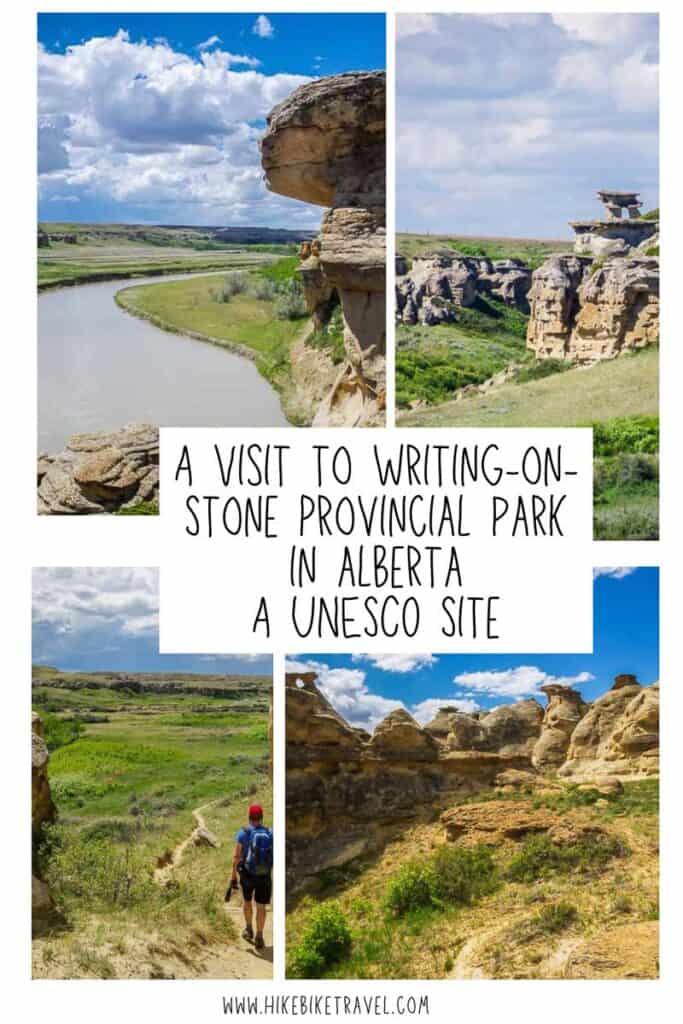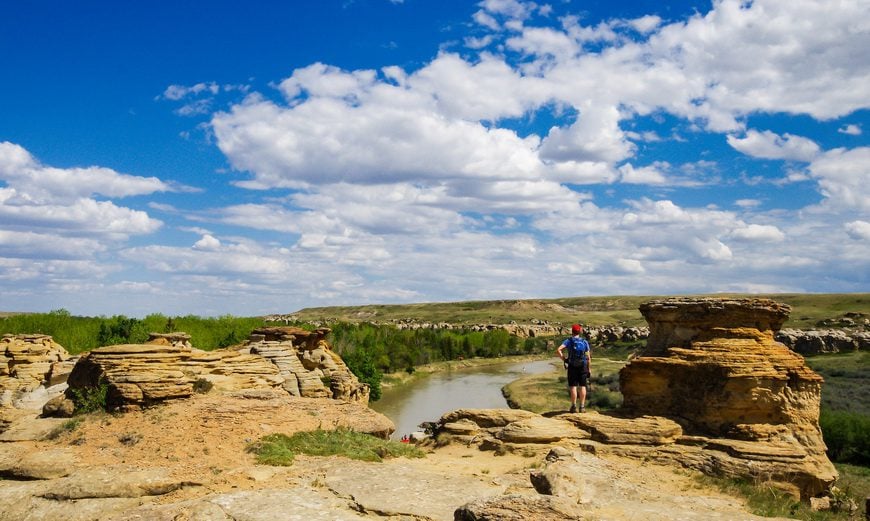If you want a history lesson that beats anything you’ve ever had in school, visit Writing on Stone Provincial Park in the southeast corner of Alberta (it’s called Áísínai’pi by the Blackfoot, meaning where the writings are).
Writing-on-Stone Provincial Park is home to fantastic desert scenery with loads of sandstone hoodoos just begging to be photographed. Hiking, canoeing, camping, and birding all take place in the park as well.
Before you visit Writing-on-Stone Provincial Park, I highly recommend that you sign up online for a two hour rock art tour so you can see a large number of rock art paintings, most of which are 500 to 1000 years old.
In fact, the Writing-on-Stone boasts the largest concentration of rock art on the Great Plains of North America.

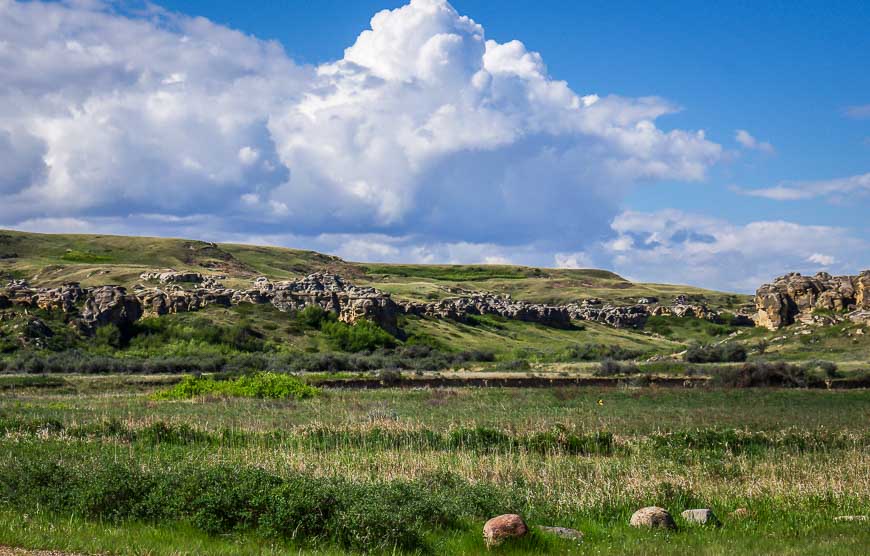
Writing on Stone Provincial Park – now a UNESCO site
Writing-on-Stone became a provincial park in 1957. Then in 1977 access to some of the park was restricted, largely because of all the graffiti happening. It became a UNESCO World Heritage Site in the spring of 2019!
According to Alberta Parks “Writing-on-Stone Provincial Park continues as a place for ceremonies and the protection of sacred sites and stories for Alberta’s Indigenous peoples (especially the Blackfoot).“
John and I did the rock art tour in Writing-on-Stone Provincial Park with Deserae Yellowhorn as our guide. We were joined by about a dozen young teenagers and four other adults. The tour started with a short drive into an otherwise off-limit section of the park. From there we hiked a short distance down the Milk River Valley, stopping to discuss the rock art panels along the way.
Though simplistic, the pictographs (paintings using ochre which was likely sourced via trade) and petroglyphs (rock art formed by carving into the stone) tell a story. And with a guide along to explain the meaning of the symbols, the rock art comes alive. Part of the way they date the art is by what is or isn’t in the scene. For example horses didn’t show up in the area until the early 1700’s.
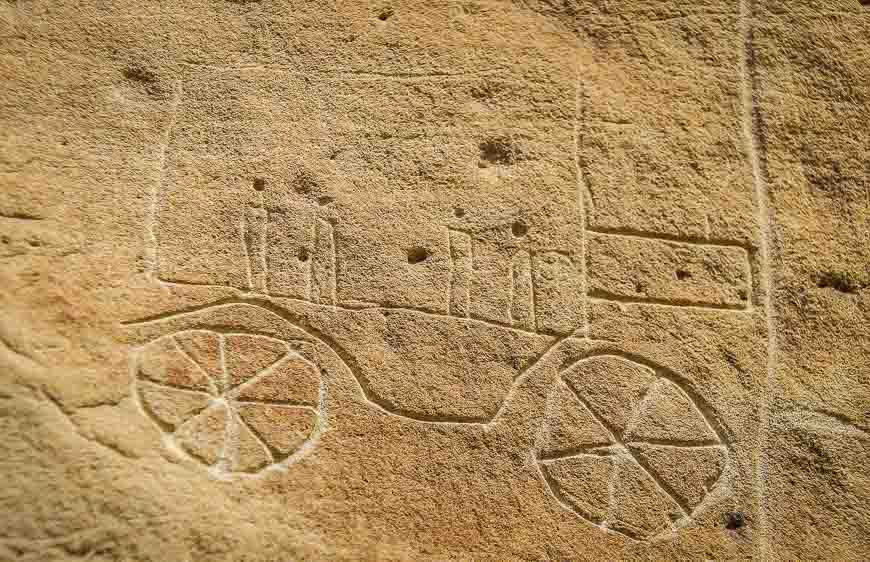
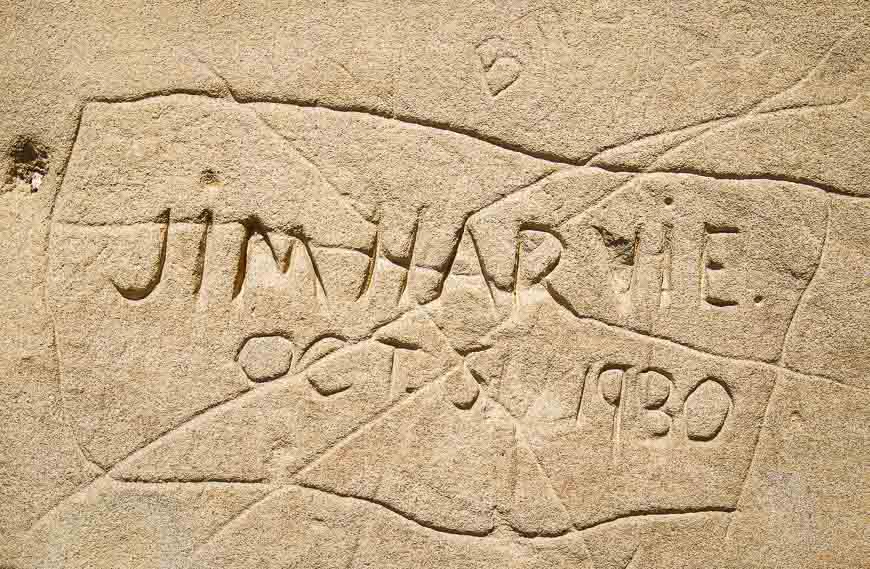
Blackfoot History
Deserae was masterful at bringing the Blackfoot history alive. We learned that the area from Writing-on-Stone Provincial Park through to the Sweet Grass Hills in Montana is a very sacred area to the Blackfoot people.
As such no wars ever took place here, despite the fact that as Deserae pointed out, the Blackfoot people were intimidating and very war-like. Interestingly, the typical male was 7 feet tall and females on average were 6.5 feet tall.
Not all the rock art in the park has been created by the Blackfoot people. The Shoshone, Cree and others contributed as they were passing through. On the other side of the Milk River – which is off limits to the general public, we are told there is even more rock art to see.
Right now there is discussion concerning what is graffiti and what is not. It has been decided that everything pre-1957 is historical. “Recent” carvings include the names of some of the earliest settlers as well as the Model T Ford.
The Blackfoot people have a very strong oral culture. Storytelling season is in winter when the days are short and the nights are long. Many stories have a moral theme – geared to teaching children a lesson. It was a real treat to hear so many stories via Deserae.
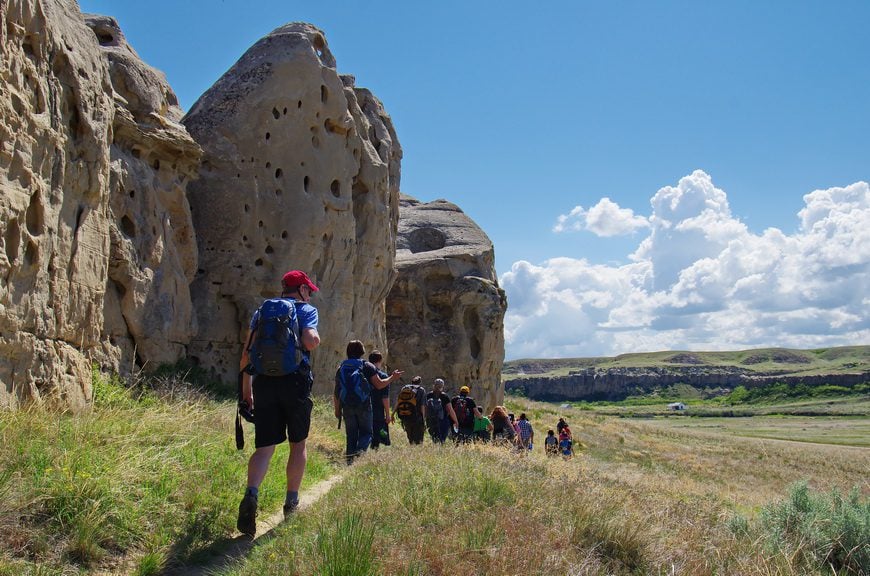
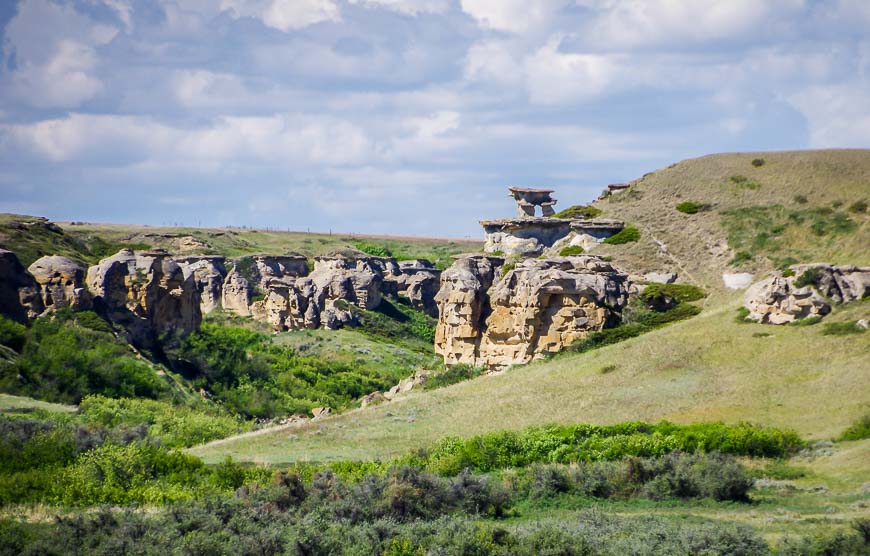
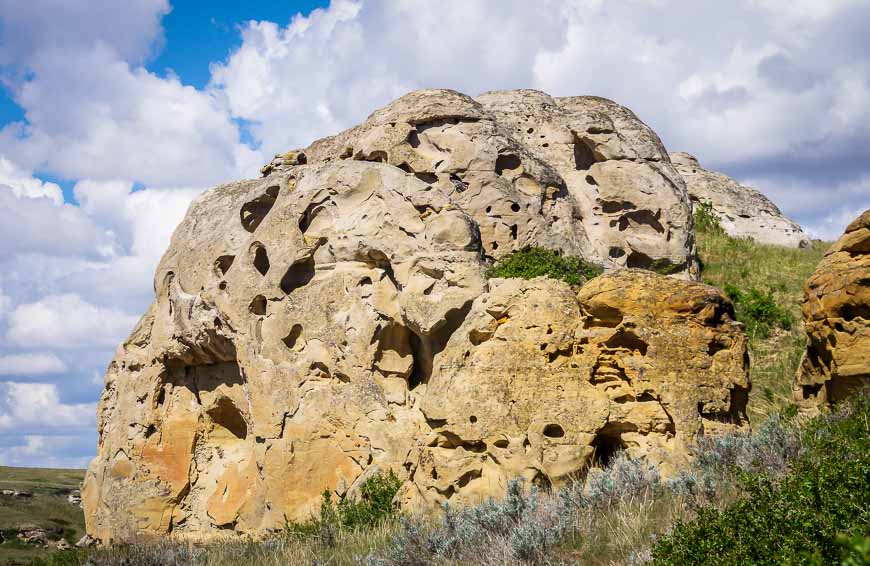
The whiskey trade before it was a park
The buildings in the photo below are reconstructions of the ones the Northwest Mounted Police lived in – while trying to disrupt the flow of whiskey from the States to Canada.
We heard that they got so bored patrolling out in the middle of nowhere that they eventually helped make the whiskey trade happen.
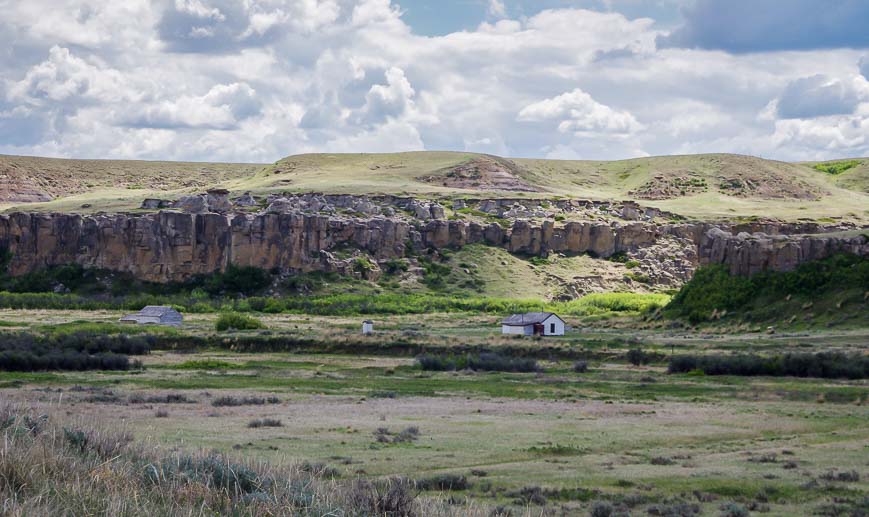

Hike the Hoodoo Trail in Writing-on-Stone Provincial Park
If you have time, I highly recommend the easy 3.5 km return hike to the Battle Scene petroglyph through the beautiful hoodoo country. It’s an interpretive trail following the Milk River with a dozen stops along the way described.


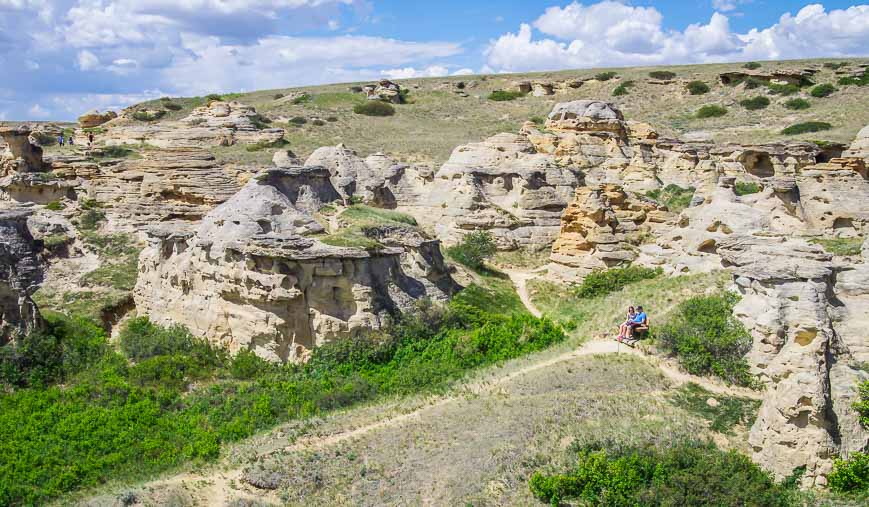


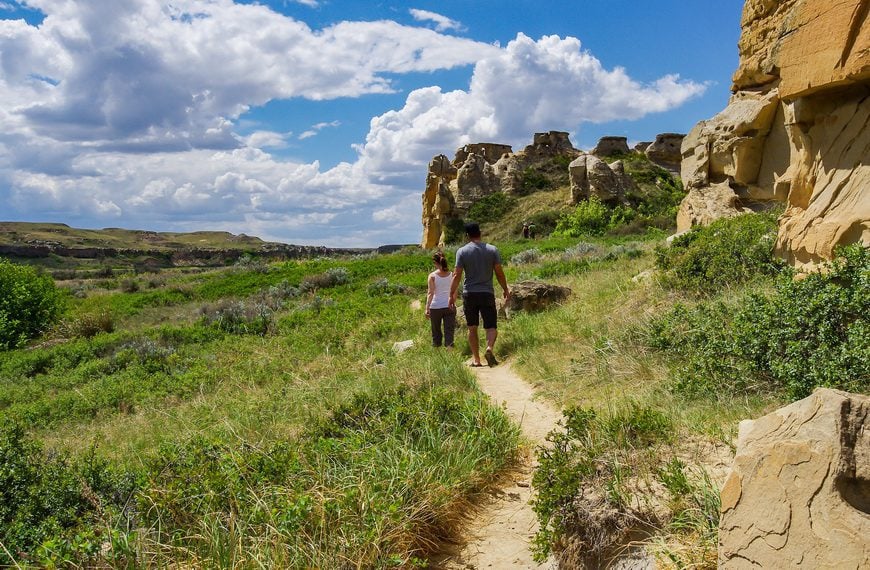

If you visit Writing-on-Stone Provincial Park
Fees: Tours are $15 per adult. There is a $5 reservation fee.
Snakes: There are three types of snakes in the park – garter, bull and rattlesnakes. In the last four years, there has only been one rattlesnake bite – on account of stupidity.
Ticks: It’s tick season between June and July. Then it’s mosquito season. Take lots of bug repellent.
Water: Carry lots of water (1-2 L minimum) as it can get very hot around the hoodoos – 10°C above the surrounding area.

Getting to Writing-on-Stone Provincial Park from Milk River, Alberta
From Lethbridge take Highway 4 southwest to the small community of Milk River.
This is the starting point of the fabulous three day canoe trip on the Milk River that takes you right into the park. Head east on Highway 501 and then south on 500 to reach the park. Allow 30 minutes to drive the 41 km from Milk River.
Note: There is a small grocery store in Milk River where you can pick up any last minute supplies. Be sure to take lots of cold drinks especially if you plan on camping.

More reading about travel in southern Alberta
- 10+ Fabulous Hikes in Waterton Lakes National Park
- 7 Things to Do in Medicine Hat, Alberta
- Where to Hike, Bike & Refuel in Lethbridge Alberta
- 3 Southern Alberta Parks That Should be on Your Radar
- A Visit to Southern Alberta’s Castle Provincial Park
Click on the photo to bookmark to your Pinterest boards.
